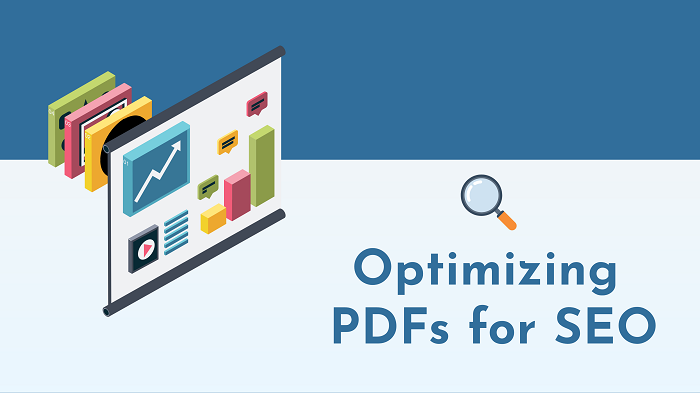Table of Contents
- Understanding the Concept of “Is a Document SEO Friendly?”
- Why PDF Files Matter in the SEO Landscape
- Common Misconceptions About PDF SEO
- Key Elements of an SEO-Friendly PDF Document
- Five Common Questions About “Is a Document SEO Friendly?”
- How to Optimize PDF Files for SEO: Step-by-Step Guide
- Best Practices and Common Mistakes to Avoid
- Measuring the SEO Performance of Your PDFs
- Future-Proofing Your PDFs for SEO
- Conclusion and Strong Call to Action
1. Understanding the Concept of "Is a Document SEO Friendly?"
- Crawlable by Search Engines: The text, images, and metadata can be read and indexed by bots.
- Relevant to User Queries: It addresses searchers’ specific questions or needs.
- Optimized with Keywords: Strategic placement of relevant keywords without overstuffing or spamming.
- Structured with Proper Headings and Formatting: Easier for both humans and search engine crawlers to parse.
- Accessible to All Users: Complies with accessibility guidelines so that users of assistive technologies can also interact with it.
2. Why PDF Files Matter in the SEO Landscape
PDFs are used for a variety of reasons:

- Formal Documentation: Annual reports, sales brochures, event flyers, and product specifications.
- Educational Materials: Whitepapers, eBooks, case studies, or detailed guides.
- Marketing and Sales Assets: Catalogs, user manuals, and promotional materials.
- Extended Reach: An optimized PDF can appear in Google search results, driving more visitors to your website or landing page.
- Better User Experience: A well-structured PDF is easier to read and navigate, improving user satisfaction and retention.
- Brand Consistency: PDFs often contain branded materials; if these PDFs are found online, it reinforces brand identity.
- Resource for Backlinks: If your PDF is informative, other sites may link to it, boosting its authority and ranking potential.
3. Common Misconceptions About PDF SEO
1. “Search Engines Don’t Crawl PDFs”
- Reality: Modern search engines, including Google, crawl and index the text in PDFs. As long as the text is not embedded in non-searchable images, it is discoverable.
- Reality: Optimized PDFs can rank just like any HTML page, especially if they contain valuable, keyword-rich content that users find helpful.
- Reality: Users looking for in-depth guides or formatted documents (reports, manuals, etc.) often prefer PDFs. If the result aligns with the user’s needs, they will click on it.
- Reality: While PDFs can pose accessibility challenges, you can incorporate tags, alternative text for images, and readable text layers to improve accessibility significantly.
- Reality: Most PDF software, including Adobe Acrobat Pro, allows you to edit and add metadata such as Title, Author, Subject, and Keywords.
4. Key Elements of an SEO-Friendly PDF Document
Let’s outline the critical components that transform a generic PDF into an SEO-friendly document:

- Bad Example: FinalVersion_v2.pdf
- Good Example: SEO-Best-Practices-Guide.pdf
- Include your primary keyword in the Title.
- Provide a brief but descriptive Subject.
- Use relevant Keywords (though not as critical as in the past, they can still offer minor SEO benefits).
- It is generated from text-based files (like Word or InDesign) whenever possible.
- Uses Optical Character Recognition (OCR) if it must include scanned pages.
- Improve user navigation.
- Pass link equity if your PDF gains external backlinks.
- Encourage users to explore your site further, which can lower bounce rates and increase page views.
- Legible fonts.
- Appropriately sized images.
- Minimal clutter, ensuring the file opens quickly and renders well on smaller screens.
5. Five Common Questions About "Is a Document SEO Friendly?"
Below are five frequently asked questions that address the broader query of “Is a document SEO friendly?” These questions specifically help clarify the concept in relation to PDF optimization.

6. How to Optimize PDF Files for SEO: Step-by-Step Guide
Now that you understand the fundamental elements of an SEO-friendly PDF, let’s walk through a straightforward, step-by-step process:
- Best Practice: Start with a text-based format (e.g., Microsoft Word or Google Docs) and then convert to PDF. If you have scanned documents, use OCR technology to make the text machine-readable.
- Title: Insert a descriptive title featuring your primary keyword.
- Author: Provide a recognizable author name, either your organization’s name or the actual writer.
- Subject: Summarize the PDF content in a single sentence.
- Keywords: Include 2-5 relevant keywords; don’t overdo it.

- Organize Content: Divide the PDF into chapters or sections, each with a clear heading (H1, H2, H3 as necessary).
- Improve Readability: Short paragraphs and bullet points make it more user-friendly.
- Describe Images: Keep alt text brief yet descriptive.
- Include Keywords: If it makes sense contextually, include a keyword relevant to the image.
- Internal Links: Link to relevant pages on your website.
- External Links: Reference credible external sources that add value to your content.
- Compress Images: Large file sizes can slow load time, leading to poor user experience and possible negative SEO impact.
- Efficient Layout: Avoid unnecessary design elements that increase file size.
- Add Tags for Screen Readers: Properly tagged PDFs are easier for assistive devices to navigate.
- Use Proper Contrast: Ensure the text and background have sufficient contrast.
- Descriptive URL: When you upload your PDF, ensure the URL contains relevant keywords.
- Avoid Deep Folders: Keep the PDF accessible within a logical folder structure.
- Share on Social Media: The more visibility and backlinks your PDF gains, the higher it can rank.
- Track Analytics: Monitor how many users view, download, or click through your PDF.
7. Best Practices and Common Mistakes to Avoid
- Keep It Comprehensive but Focused: A PDF that delves deeply into a topic is more likely to attract and retain user attention.
- Make It Visually Appealing: Use a clear layout with ample white space, headings, and bullet points.

- Include a Clear Call-to-Action (CTA): Encourage readers to visit your site, download a related resource, or contact your team.
- Maintain Brand Consistency: Align design elements—logos, color schemes, and typography—with your brand guidelines.
- Optimize for Multiple Platforms: Ensure the PDF looks good on desktops, tablets, and smartphones.
- Keyword Stuffing: Overloading your PDF with keywords leads to a poor reading experience and could trigger search engine penalties.
- Neglecting Mobile Usability: PDFs that are difficult to read on mobile devices can drive users away, increasing bounce rates.
- Failing to Compress Large Files: Slow load times can hinder both user experience and SEO.
- Ignoring Metadata: Skipping metadata fields can make your PDF less discoverable and less appealing in search results.
- Not Providing Contact or Next-Step Info: If users can’t easily find your website or contact details, you risk losing potential leads.
8. Measuring the SEO Performance of Your PDFs
- Index Coverage: Check if Google has indexed your PDF.
- Search Queries: Identify the keywords driving traffic to your PDF.
- Downloads: Track how many times users click the link to your PDF.
- User Behavior: See if users who open your PDF stay on your site or bounce right away.
- Ahrefs, SEMrush, Moz: Gain insights into backlink profiles, ranking positions, and competitive analysis.
- Content Audits: Identify how your PDF performs compared to other pages or resources in your content library.

- Surveys or Feedback Forms: If users repeatedly mention difficulty in finding or reading your PDF, you may need to revise its structure or format.
9. Future-Proofing Your PDFs for SEO
- Regular Updates: Even if your PDF is evergreen content, review it annually to ensure data and references remain accurate.
- Adopt New Technologies: Explore advanced PDF features like interactive forms, embedded videos, or 3D images (where relevant) to enhance user engagement.
- Voice Search Optimization: As voice search grows, ensure your PDF addresses long-tail, conversational queries.
- Schema Markup: While PDF-specific schema is not as robust as HTML, embedding relevant metadata will become increasingly important.
- Mobile User Experience: Continue to refine layout and font sizes for maximum readability on tablets and smartphones.
10. Conclusion and Strong Call to Action
In conclusion, “Is a document SEO friendly?” Absolutely—if you optimize it correctly. PDFs are no exception. They can rank in search results, attract substantial organic traffic, and serve as authoritative resources for your audience when they incorporate the best practices we’ve discussed:
- Use keyword-rich filenames to signal relevance to search engines.
- Optimize metadata (Title, Author, Subject, Keywords) in PDF properties.
- Ensure content is searchable by avoiding flattened text or images without OCR.
- Maintain a logical structure using headings and subheadings.
- Add alt text for images to improve accessibility and SEO.
- Insert internal and external links to enhance user navigation and authority.
- Pay attention to file size and mobile-friendliness.
- Keep your PDF accessible with proper tagging and color contrast.
- Promote your PDF and monitor its performance using analytics tools.
Ready to Elevate Your PDF Game?
Optimizing PDFs for SEO can be a game-changer, mainly if your organization relies heavily on downloadable content. Whether you’re publishing a whitepaper, a user manual, or an annual report, make sure you give as much attention to your PDF’s SEO as you would any other piece of digital content.
We Are Excell: Your Partner in SEO Excellence

Contact us:
EXCELL INDUSTRIES LLC
6420 Richmond Ave., Ste 470
Houston, TX, USA
Phone: +1 832-850-4292
Email: info@excellofficial.com




